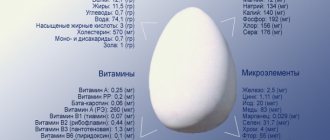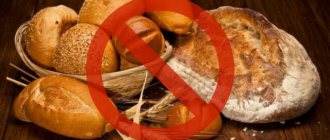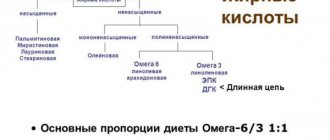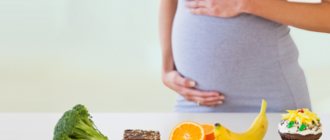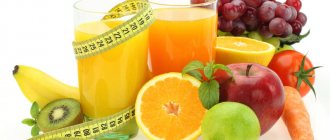An elimination diet is a dietary restriction that is a necessary condition for the treatment of allergic diseases. Indicated for all patients who have urticaria, Quincke's edema, bronchial asthma, respiratory allergy and other manifestations of a delayed or immediate allergic reaction. Designed to reduce the likelihood of exacerbation of the disease and the formation of a new (cross) allergy.
Elimination diet - what is it?
The use of an elimination diet in the treatment of allergic reactions is an effective way to accurately identify foods that provoke unpleasant discomfort. The essence of the technique is simple - to identify food irritants that will have to be abandoned during treatment or completely eliminated from the diet in order to eliminate the likelihood of relapse.
During the elimination diet period, it is recommended to regularly record what foods are consumed, their quantity, even the time of the meal. Be sure to describe in detail the method of heat treatment and the body’s reaction to each dish. Show the records to a doctor who will help identify the allergen that causes irritation and unpleasant discomfort.
During treatment you will have to completely stop eating foods that cause allergies. A nutrition plan and menu are usually developed by a doctor individually based on indications, taste preferences, age, and personal characteristics of the body. If, after switching to the usual menu, signs of irritation reappear, you will have to resort to dietary nutrition again, otherwise the risk of developing more serious complications increases.
The duration of keeping a control diary, which allows you to determine the allergen product, is at least two months. Usually this is enough to identify an ingredient that is dangerous to the body, but if necessary, the doctor will recommend extending the course.
A prerequisite for successfully identifying a product that causes an allergy is not to take any hormonal or antiallergic medications during the course. A careless attitude to this rule will result in a lack of results in determining the food irritant.
Advantages and disadvantages of elimination
Let's look at a few benefits of an elimination diet:
- uncovers unknown food allergies. Digestive problems are very common, even when a person eats healthy foods. Why? Because all it takes is one or two unidentified food allergens to have a big impact on the body as a whole;
- Helps reduce symptoms of IBS (irritable bowel syndrome). In a 2006 study conducted by the University of Kansas Medical Center, 100% of patients experienced significant improvement in digestive symptoms after undergoing an elimination diet;
- useful for treating bowel leakage syndrome. Leaky gut occurs when the lining of the digestive tract has tiny holes that allow certain substances to enter the bloodstream, damaging the system. Intestinal leakage is a major cause of autoimmune diseases such as chronic and ulcerative colitis. Leaky gut is commonly thought to be caused by gluten intolerance, but can also be caused by a range of other food allergies;
- provides improvement in skin irritations such as eczema and acne. There is compelling evidence that skin conditions are associated with undiagnosed food allergies;
- helps prevent and treat ADHD and autism. Common food allergens, such as gluten and pasteurized dairy, may increase the risk of ADHD and autism because proteins in these ingredients cause intestinal permeability. This occurs when substances leak through the intestines and are then recycled into the bloodstream, at times acting like an opioid drug in the brain. Once the substances enter the bloodstream, they come into contact with a large number of immune cells, causing inflammation;
- An elimination diet is an effective and inexpensive therapeutic strategy for patients who suffer from migraines;
- helps people with eosinophilic esophagitis, a chronic condition in which allergies cause inflammation of the esophagus, the tube that carries food from the mouth to the stomach. People with EE have difficulty swallowing dry and dense foods, increasing the risk of choking.
Among the disadvantages of the elimination diet, it is necessary to indicate:
- duration. In some situations, the patient is forced to adhere to this diet for about a year;
- lack of nutrients;
- meticulous preparation of the daily diet;
- constant consultation with a doctor;
- fatigue, headache, distress, emotional instability and strong food cravings;
- a large number of restrictions in products;
- It is not always possible to find the necessary products outside the home.
Principles of nutrition on a diet
There are two basic rules that are recommended to be followed during the continuation of the elimination antiallergic diet. The first requirement is to completely eliminate from the diet some foods that are highly likely to trigger allergies because they contain powerful allergens.
The second requirement is to create a menu, trying to include nutritious and balanced dishes in the diet. Every day it is recommended to eat foods rich in protein and mineral compounds, carbohydrates, fats and vitamins.
The optimal number of calories that are recommended to be consumed throughout the day is up to 2000. If you regularly exceed this norm, there is a risk of weight gain, the appearance of fat deposits, and even obesity.
The diet for an elimination diet should include vegetables and fruits. It is advisable to consume them without heat treatment, which destroys most of the vitamins and nutrients. It is recommended to prepare light salads, freshly squeezed juices, fruit or vegetable slices.
Provocative test
An elimination-provocative diet is designed to remove a person from a hypoallergenic food system. Here, those products that were excluded are gradually returning to the menu. If the product causes an allergy again, it is again excluded from the diet.
The reliability of this method is often influenced by various psycho-emotional and physical factors. To avoid them, the doctor in a hospital setting performs a control provocative test, where the food allergen is given to the patient not openly, but in combination with other products or in the form of a capsule.
Such a test cannot be used in case of an anaphylactic reaction, acute allergic attacks, or if a person reacts negatively to several foods at once.
Prohibited foods that are recommended to be removed from the menu
If you are using an elimination diet for allergies, it is recommended to study the list of foods that should be absent from your diet. During treatment, you will have to inspect the refrigerator and kitchen cabinets and throw away ingredients that are hazardous to health, which can cause deterioration in well-being and provoke additional symptoms of irritation.
When preparing diet food during the diet, do not consume:
- smoked products (fish, meat, sausages);
- salt, hot or too aromatic spices;
- pickles;
- nuts (the most dangerous are peanuts, which often cause allergic reactions);
- fish and seafood;
- vegetables (tomatoes, horseradish, radishes, eggplants, garlic, onions);
- eggs;
- citrus fruits (lemons, oranges, tangerines);
- coffee;
- confectionery;
- chocolate;
- marinades;
- food additives, flavorings, flavorings;
- products fried in vegetable oil or animal fats.
During the elimination diet, eat in small portions (approximately 150–200 grams). Sit down at the table every 2-3 hours, keeping approximately the same time intervals. To avoid irritation of the digestive system, eat light foods, steamed or boiled. Be sure to chop solid foods - large pieces of food take a long time to digest, so there is an increased risk of causing discomfort in the digestive organs.
Also pay special attention to drinks during the elimination diet. It is not recommended to consume milk and dairy products, sweet soda, and packaged store-bought juices. Bread kvass, alcoholic drinks, and mineral water are also prohibited.

How to go out correctly
An elimination diet is prescribed for both therapeutic and diagnostic purposes. Three weeks after following this diet, you begin to get rid of the symptoms of food allergies. Each new product is added to the diet consistently and in small quantities. You should not eat more than one new food per week.
The doctor indicates the products on a special prohibited list. After eating the next food, monitor the body’s reaction. When allergic reactions subside, visit a specialist. An allergist-immunologist determines the cause of the disease and prescribes treatment.

List of elimination diet products recommended when creating a menu
In order for the elimination diet for allergies to bring maximum benefit, familiarize yourself with the list of recommended foods for cooking in advance. During the course, it is allowed to eat lean meat (rabbit, chicken, veal). The optimal heat treatment option is baking in the oven, boiling or steaming.
The elimination diet should also contain vegetables (cabbage, potatoes, cucumbers), vegetable oil and butter. Be sure to include porridge (oatmeal, buckwheat, wheat) in the menu, which can be cooked only in water, without using milk. Season with a small amount of butter. Supplement your diet with fruits - apples, gooseberries, currants.
It is also recommended to consume fermented milk products (minimal fat content) during your diet. Supplement the menu with curd mass, kefir, yogurt (it is better to prepare it yourself, without using prohibited flavorings and flavoring additives).
With an elimination balanced diet, bread is allowed to be included in the menu. Dry the slices slightly, but do not fry them in oil. Occasionally, nutritionists suggest pampering yourself with desserts or baked goods for diabetics - these delicacies do not contain sugar, harmful additives, or salt.
Recommendations from nutritionists
Nutritionists give patients the following recommendations:
- It is acceptable to prepare dishes for a couple of days, for example, borscht or soup.
- It is advisable to plan your menu several days in advance so that you know exactly what to buy to prepare the necessary dishes. Then at the right time everything will be at hand.
- It is permissible to take ready-made food in special containers to work. It can be quickly reheated in the microwave.
- Meals should be regular.
- Every day you need to eat three servings of vegetables and fruits.
- You should not expect this program to help you lose weight.
- It is advisable to purchase organic fruits and vegetables that are not treated with pesticides.
- Fans of coffee and tea should not suddenly give up their favorite products; caffeine consumption should be reduced gradually, otherwise headaches may occur.
- Every day you need to drink up to 2 liters of clean water.
Sample Elimination Diet Menu
Despite the fact that the elimination diet is developed individually based on indications, there is a nutritional plan that is recommended to be used when creating a diet yourself. It is not necessary to strictly adhere to the menu, but you will have to take into account products that are on the list of prohibited items - they must be absent.
Elimination antiallergic diet, an ordered seven-day sample menu with recommendations for food preparation:
| Breakfast | Snack | Dinner | Dinner | |
| Monday | Wheat porridge (cook the cereal in water, do not add salt or sugar, improve the taste with a piece of butter), a small green apple, unsweetened weak tea | Cabbage salad (fresh white cabbage, dill, onions, cucumbers, olive oil dressing), meatballs (steam or place on a baking sheet and bake in the oven), herbal drink or tea | Rich vegetable soup (use carrots, potatoes, bell peppers, herbs, season with vegetable oil), pasta with pieces of boiled lean meat, fermented milk drink or tea | Vegetable vinaigrette, tea with unsweetened cookies or buns |
| Tuesday | Rice porridge (for obesity, it is recommended to combine the illumination diet with fat-burning techniques, so prepare porridge from brown grains, which do not have a high calorie content and contain a low percentage of starch, which is dangerous for the figure), apple and tea | Tea with biscuits or dry cookies | Vegetarian pearl barley soup (cook in vegetable broth), steamed cutlets with mashed potatoes or baked potatoes, fruit compote (do not add sugar) | Curd pudding, drink - kefir or yogurt |
| Wednesday | Buckwheat (boil the cereal in water, do not use spices), banana or pear, tea | Meatballs or cutlets from lean meat (steamed or in the oven), cabbage salad (add carrots, herbs, vegetable oil), drink - kefir | Shchi (add low-fat sour cream), meatballs (use lean meat) with pasta or boiled potatoes, recommended drink - compote or freshly squeezed fruit juice | Pasta (season with vegetable or butter), serve with pieces of lean meat, fruit or berry jelly |
| Thursday | Porridge (oatmeal or buckwheat), one fruit (apple, kiwi, pear or a handful of plums), tea | Vegetable vinaigrette, tea with a bun or cookies (biscuits, crispbread) | Stew of cabbage, pieces of lean meat, berry or fruit compote (do not add sweet ingredients) | Cheesecakes (drizzle with low-fat sour cream before serving), jelly |
| Friday | Millet porridge, freshly squeezed juice from apples or pears | Salad (chop cabbage, cucumbers, season with vegetable oil), serve with oven-baked meatballs, drink - jelly | Stew potatoes with carrots, pieces of lean meat, prepare soup in rich vegetable broth, drink low-fat kefir | Pie with apple filling, homemade yogurt |
| Saturday | Rice porridge is a mess, a drink is tea, you are allowed to eat an unsweetened green apple | A slice of bread with a piece of hard mild cheese, freshly squeezed juice | Stewed cabbage (put in pieces of chicken or beef), vegetable soup (zucchini, potatoes, carrots and bell peppers), recommended drink - berry compote or juice | Boiled potatoes (sprinkle with sour cream), tea |
| Sunday | Pasta (drizzle with melted butter milk), green tea | Vinaigrette, steamed meatballs, dry fruit drink | Vegetable broth soup with pearl barley, stewed cabbage (add grated carrots, chicken or rabbit meat), wash down with tea | Curd cheesecake with tea or fruit jelly |
Children
Prevention of bronchial asthma in children is very important. And all because poor nutrition alone in the first years of life can cause this disease. What do you need to know when choosing preventative measures for the little ones?
- Breastfeeding the baby is of utmost importance. Scientists have proven that mother’s milk is a huge preventive measure not only for this disease, but also for other diseases.
- You also need to know that it is necessary to strictly observe the time of introduction of the first complementary foods. It is ideal if the baby eats nothing but mother’s milk for up to six months. In the future, you need to remember that babies should not be given highly allergenic foods such as eggs, honey, chocolate, citrus fruits and nuts.
- There should be as few irritants as possible in the baby’s life - tobacco smoke, poisons, chemicals (including household chemicals).
- The most important measure for preventing asthma in children is timely treatment of a wide variety of respiratory diseases.
Useful tips
Having understood the features and rules of the elimination diet, what it is and how to properly formulate a diet, it is recommended that you familiarize yourself with the useful advice of nutritionists. Following certain rules will determine how quickly and effectively you can get rid of allergic irritation and improve your overall well-being.
In order for the elimination diet to result in positive results, it is recommended to comply with the following requirements:
- prepare the diet in advance - it is better to immediately organize the menu for the week, this will make cooking easier and will allow you to avoid mistakes that are dangerous to your health;
- don’t overdo it with cooking - it is recommended to use simple combinations of foods, which will help you identify the allergen in a timely manner and subsequently eliminate it from your diet;
- do not allow yourself to go hungry, take food regularly and without breaks, if between main meals you are bothered by an unpleasant feeling of hunger, an unscheduled snack is allowed - eat a piece of fruit, a handful of dry fruits, drink a glass of yogurt or kefir;
- avoid purchasing prohibited products; it is better not to keep them in the refrigerator - this will prevent temptations;
- do not experiment - the diet should completely avoid products containing elements that can cause allergies;
- when creating a menu, give preference to fresh fruits and vegetables;
- drink a lot of liquid, especially clean water - this will help prevent dehydration, start the digestion process, and activate metabolic processes;
- do not abuse the elimination diet - the duration of the course should not exceed six months, if this time was not enough to identify the allergen, contact a nutritionist, or undergo a medical examination to determine the reason for the lack of results.
An elimination diet is not a strict food restriction that you will have to adhere to throughout your life. After identifying the food irritant, it is allowed to return to the previous diet, excluding only foods that are hazardous to health.
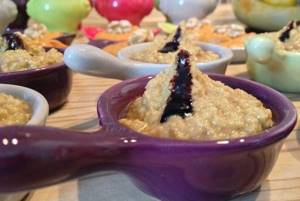
Basic principles, rules of cooking
When following a diet, you need to be guided by the following principles:

- Eat small meals - 4-5 times a day, in small portions.
- Keep a food diary and write down information about all the dishes you eat.
- Eliminate from the diet the potential allergen and all dishes that may contain traces of it. If you are gluten intolerant, you should not eat breaded cutlets or semi-finished products.
- Cook the meat in two stages: drain the first water after boiling.
- Soak cereals for 1 hour before cooking.
- Boil milk for 15 minutes before drinking.
- Boil eggs for 30 minutes.
- Avoid foods that cause allergies.
- Limit salt intake: adults need 6 g per day, children – 2 g.
If these rules are followed, the effect can be achieved.


